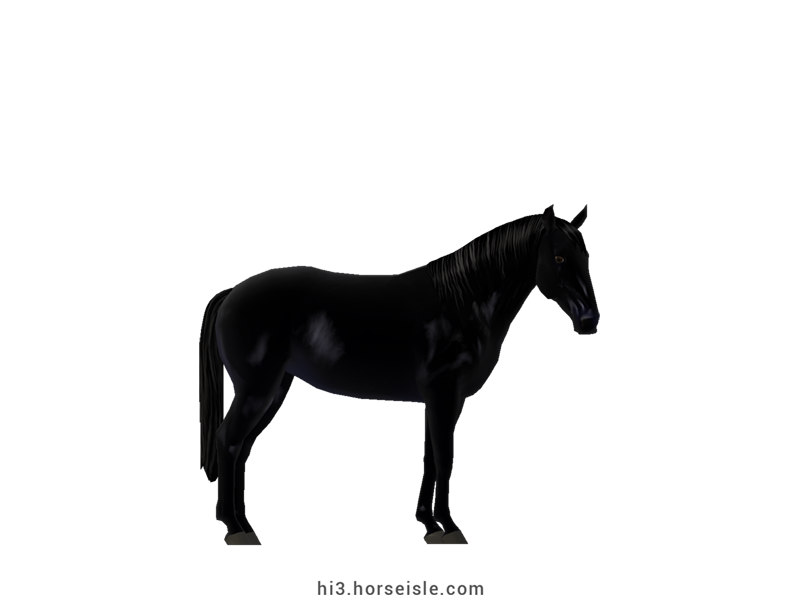Our Massive Real World Equine Reference!
[ INDEX ] Equine Type: Horse Breed: Kabarda [ PREV ] [ NEXT ]
An Oriental-Russian mix:
Kabardino-Balkaria is a region that resides in south Russia, on the border with Georgia. It is known for the tall, snowy mountains that stretch along its southern border, one of those being Mount. Elbrus which is the highest mountain in Europe, reaching 5,642 meters in height.
It was at the feet of those mountains where the Kabarda was born in the 16th century, out of Oriental and Russian breeds that were brought to the region probably by the Ottomans and Russians who inhabited Kabardino-Balkaria at the time.
The resulting horses were kept outdoors all year round, living on the pastures that the mountains had to offer. Of those who survived, the Kabarda was born.
An ideal mountain horse, but not a sport one:
Over the following centuries, the Kabarda developed natural agility, intelligence, endurance, and surefootedness to be able to climb easily up and down the mountains. It became locally known as the best mountain horse one could ever own.
Unfortunately, the Kabarda also had a major disadvantage: low speed (compared to other saddle breeds). This made the Kabarda a poor sport horse for speed-based disciplines such as show-jumping and racing, and led to a decrease in its popularity during the 20th century.
The Anglo-Kabarda:
The solution came in the form of the good, old Thoroughbred breed. During the 20th century, more and more Kabarda horses were crossed with Thoroughbreds to create Anglo-Kabardas, who were faster and more suited for sport disciplines than the Kabardas (see 'Anglo-Kabarda').
The Anglo-Kabarda soon gained popularity in the region, with more and more purebred Kabardas being crossed with Thoroughbreds to supply the demand. However, this also led to a sharp decrease in the numbers of purebred Kabardas, and the Kabarda became rare.
The Kabarda today:
Today, the Kabarda exists in small numbers in Kabardino-Balkaria, particularly near the Caucasus Mountains, but also in Germany. It is used for endurance riding, recreational riding, and for breeding Anglo-Kabardas.
In Kabardino-Balkaria, it is also used for crossing the mountains either under saddle or as a pack animal.
Conformation:
The Kabarda has a long yet slender and narrow head with a very convex (Roman) profile, especially closer to the muzzle. The eyes are small, and the ears are long with their tips curved inwards.
The neck is muscular, medium-to-long in length and of high set, connecting to medium withers. The back is straight, the croup is sloping, and the girth is deep. The body is broad and muscular but not heavy.
The mane and tail are often wavy. The legs are mostly clean from feathering, and although real Kabardas sometimes have minor feathering on their fetlocks this trait is not found in Horse Isle.
There are three subtypes within the breed: Base Kabarda, Massive Kabarda, and Saddle Kabarda, all of which are found in Horse Isle.
Performance metrics:
The following are the: range, average, (SD), and MOE of performance metrics of ordered Kabardas in Horse Isle (not bred ones). In rare cases,
Speed: 15.3-16.5, 15.9 (0.2), 0.05.
Sprint: 47-60, 54 (3), 0.52.
Accel: 0.87-1.02, 0.95 (0.04), 0.01.
Decel: 0.91-1.07, 1.00 (0.03), 0.01.
Jump: 5.22-5.45, 5.33 (0.05), 0.01.
Pull: 2.23-2.92, 2.53 (0.12), 0.02.
Turning: 51.21-65.00, 57.91 (3.15), 0.62.
Reverse: 2.6-3.2, 2.8 (0.1), 0.03.
Stamina: 43.74-46.93, 45.23 (0.87), 0.17.
Reaction: 0.65-0.80, 0.75 (0.02), 0.00.
Coats & Height:
Colors: brown, bay, black, and more rarely grey or dark chestnut. The coat is always dark.
Additionals: sooty, dark mane & tail. No markings.
Height: 14.2 to 15.2hh.
[ INDEX ] [ PREV ] [ NEXT ]









